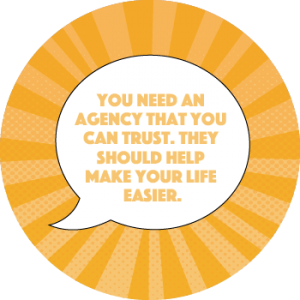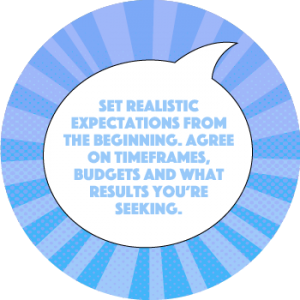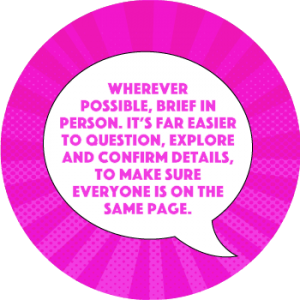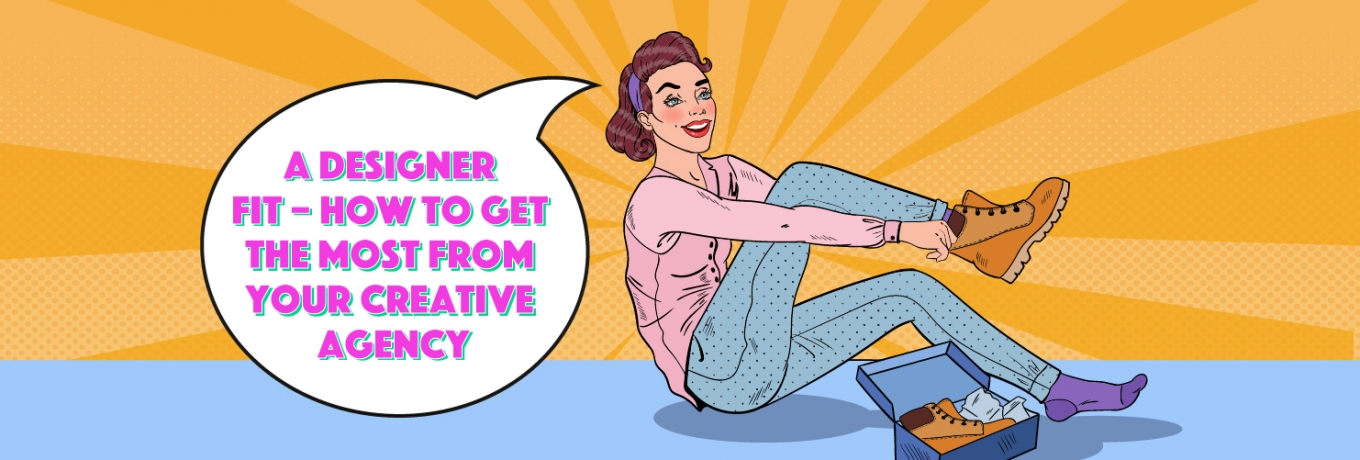Across the world, the appetite for all things ‘Made in Britain’ continues to prove strong and it’s not just our products that are being snapped up – demand for British design is also booming.
The UK now has the second-largest design sector in the world and the largest design industry in Europe. So, for any business in need of creative support, it’s a great place to start your search for an agency partner.
Like a favoured pair of shoes, or those trusted jeans, finding a creative agency is about finding the right ‘fit’. That means a team that you feel comfortable with and that brings out the best in you. One that compliments your own working style and ethos; that understands the pressures and challenges you are under; and that communicates well, so you know you are always in safe hands.
Get the partnership right and it can be a beautiful thing. But like any relationship, it’s a two-way street. To achieve the best results takes time and an investment in the relationship from both sides.
To help you supercharge the process, here we’ve pulled together our 3 top tips for achieving that all important designer fit.
1. Choose the right agency to begin with
An agency may tick all the boxes on paper, but just as important as their experience and skills set, is how they interact with you and make you feel. Never underestimate your gut instinct here.
Flashy websites and polished sales pitches are one thing, but digging deeper is the key to finding a good fit. You need anagency that you can trust and feel confident in. They should help make your life easier, not cause you extra stress. If you have existing supplier relationships that are working well, try and pinpoint what it is that makes them so successful.
If you haven’t got an agency yet and you’re not sure where to start your search, then ask for recommendations from your peers.
You need to give some consideration to size too. Do you prefer a large agency with vast resources, or want to be a big fish in a small pond? Both options can have their benefits. If you’re a business with rapid growth plans, then always check that any agency you work with can scale up with you.
Also check that what you think you’re buying into, is what you’re actually getting. Ask who will be looking after your account day-to-day. You need to know you will have good chemistry with them. Hitting it off with the pitching team – who may just be sent out as they’re good at winning new business – isn’t going to help you moving forward.
2. Discuss and agree logistics from the start
Now you’ve chosen an agency, you need to agree how it’s all going to work.
The relationship and project management process will flow far more smoothly if you set realistic expectations from the beginning. This should include a discussion over timeframes, budgets and what results you are seeking.
One top tip here is to try and have just one internal project lead, who can act as the main point of contact between yourself and the agency. They should be a strong go betweenand someone who is great at communication and time keeping.
With all the new digital tools that are now available, there are endless ways that teams can share and collaborate on projects. Make the most of such technology, to save yourself time and help keep everything transparent and in one place.
Also, make sure you have an approval process outlined before any work gets underway, so there are no hidden obstacles or delays when you get stuck in.
3. Good briefs lead to great results
Providing a good brief is vital, but doing so is not always as easy as it sounds. Here are some pointers:
- Brief only when you’re fully prepared – Have a plan and know what you want and why. Outline the end goal. Define the key messaging you want including and make sure everyone is aiming towards the same objective.
- Brief in person wherever possible – Now we know this isn’t always possible, but especiallyin the beginning of a new relationship, it can be beneficial to brief in person. Emails can easily be misinterpreted. In person, it’s far easier to question, explore and confirm details, to make sure everyone is on the same page.
- Show instead oftell – If you struggle to express the style, look or feel you are after then make use of all the tools you have at your fingertips. The internet is your friend and can offer a solution here.
- Let your creatives be, well, creative – You don’t need to come up with a complete concept for your design team (that’s why you have them on board!). They are there to help bring your vision to life. One small caveat here, there’s letting them be creative and there’s not handing over enough information in the beginning. Give a detailed enough brief to set them on the right track, then enough freedom to have ideas.
- Remember – designersare not mind readers – no matter how good they may be! Even if an agency has worked with your company for years, they will still need a clear brief every time.
















